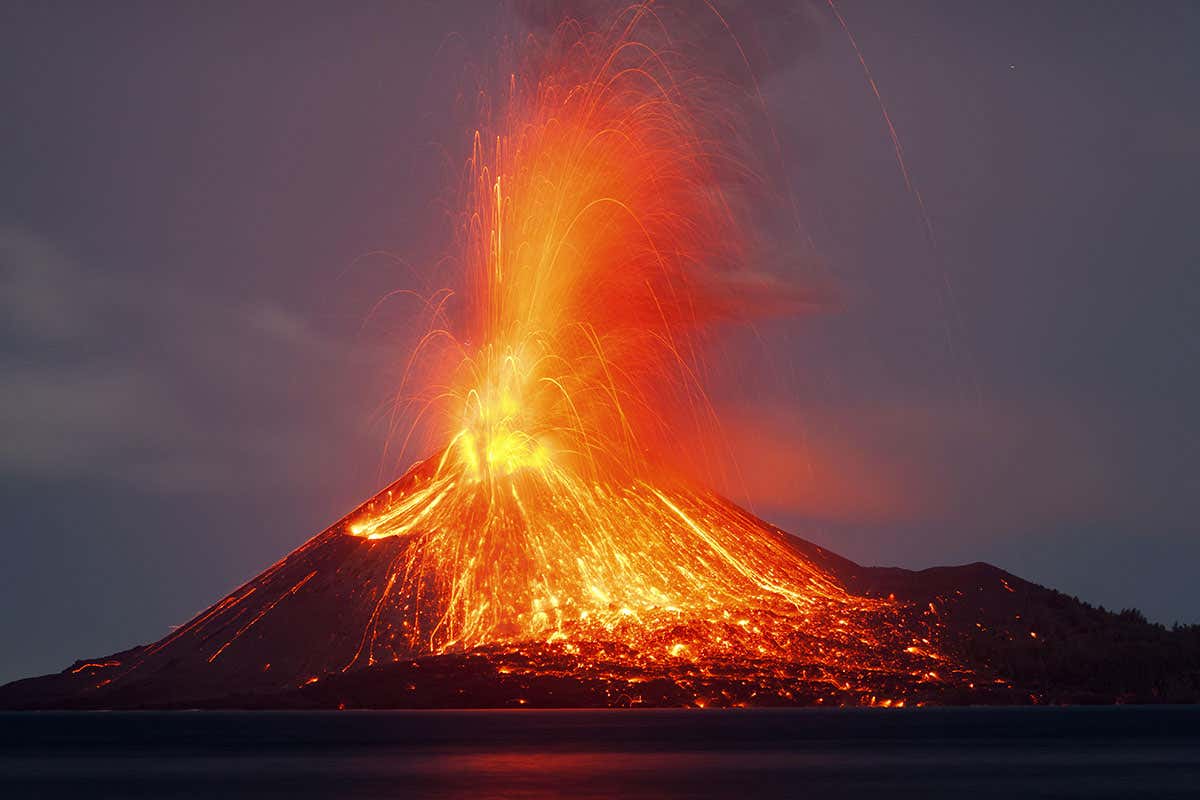Tornadoes are incredibly powerful wind storms that form out of very strong thunderstorms. Scientists still don’t understand why some thunderstorms produce tornadoes and other thunderstorms do not produce these devastating natural disasters.
Tornadoes form when several events take place in the storm. The first event is the formation of a rotating column of air. When this rotating column of air first starts, it forms inside the clouds parallel to the ground. This kind of rotation can cause hail storms. Hail forms as rain falls towards the ground and the rotation of the wind picks up the rain and carries it high into the atmosphere where it is cold enough to freeze the rain to ice. Once the wind slows down enough, the now frozen water falls back to the ground, picking up more water as it falls. If the rotating winds are strong enough, the wind will pick the hailstones back up and toss them high into the sky, freezing more and more ice to the forming hailstones. Once the hailstones are so heavy the wind can no longer carry them back into the upper atmosphere, the hailstones hurtle toward the ground.
Most of the time these hailstones are small and not very heavy, but sometimes large thunderstorms can produce golf ball or even softball sized hailstones. The larger the hailstone the stronger the rotating column of wind. Imagine how fast wind would have to be to pick up a chunk of ice the size of a softball. Yeah, it’s pretty fast. Okay, it’s insanely stupid fast.
Warm air within the thunderstorm will rise up towards the higher atmosphere. I’m pretty sure you have heard the statement “warm air rises,” well, it’s true. This rising warm air is called an updraft. Sometimes this updraft will tilt the spinning column of air so that it faces the ground. Once tilted, the spinning column of wind feeds off the energy of the updraft, becoming stronger and stronger. People can see when the spinning column tilts toward the ground because it forms what is called a wall cloud. A wall cloud is a piece of the thunderstorm that is spinning around and around so fast that it is pulled into the shape of a wall. Still pulling in energy from the updraft, the winds in the rotating column of air whirl faster and faster and a funnel of wind reaches down from the cloud to the ground. Once that funnel of wind hits the ground it’s called a tornado.
Tornadoes can form in the middle of nowhere or in a populated area.
The National Oceanic and Atmospheric Agency (NOAA) classifies tornadoes into three different types: Weak, Strong, and Violent (NOAA, 2012). They also use what they call an enhanced Fujita scale (called EF for short) to rate the damage of a tornado. The EF scale starts at 0 and goes to 5; 0 is the weakest, 5 is the strongest. The EF scale of a tornado is determined by looking at what the tornado destroyed and matching it against a chart. EF0, 1 are considered weak tornadoes; EF2, 3 are strong tornadoes and; EF 4, 5 are violent tornadoes (Wikipedia, 2012). Weak tornadoes have wind speeds of less than 110mph (177kph) and last about 10 minutes. Strong tornadoes have wind speeds of 110-205mph (177-330kph) and last 20 min or longer. Violent tornadoes have winds of greater than 205mph (330kph) and last an hour or longer (NOAA, 2012).
Winds that fast are really, really strong. I remember one night being warned that the gusts of wind funneled between two buildings were reaching speeds of 90mph (145kph). I wanted to feel what that kind of wind felt like, so I walked between the buildings. There were some gusts of winds that pushed me back so hard that I couldn’t even take a step until the wind died down just a little. I am not exactly a small person and that is only 90mph (145kph). Even weak tornadoes have wind speeds faster than that. Imagine the power of those winds. Tornadoes have been known to pick up houses, even damage tall skyscrapers.
Damage from an F1 tornado. The house is still standing but damaged. Damage from an F5 tornado. The house that once stood on this foundation is completely gone.
Tornadoes can form anywhere, even in places that most people consider safe from tornadoes. In 1999, Salt Lake City, UT, had a tornado that ripped through the downtown area. Salt Lake City, according to many tornado myths, should have been safe from tornadoes. Salt Lake City is “protected” by mountains and water and; it’s a downtown area. Both of these things are considered by some to prevent tornadoes, however, no place is truly safe from tornadoes. Tornadoes have been seen on every continent except Antarctica. Now, I don’t know if they don’t have tornadoes in Antarctica or if there just aren’t enough people on Antarctica to see them when they happen.
While no place is really safe from tornadoes, there are places that have far more tornadoes than others. The place with the most tornadoes is Tornado Alley. Tornado Alley is in middle of the United States. The United States is big, extending far south to the tropics and far to the north where the cool air roams. In the middle of the United States there are no major mountain ranges that run east to west that block the flow of warm moist air from the south and cool dry air from the north. When cool dry air from the north slams into warm moist air from the south the conditions are perfect for massive tornado-spawning thunderstorms. When the right conditions are met you get a tornado. In Tornado Ally, the right conditions happen more often than any other place in the world.






